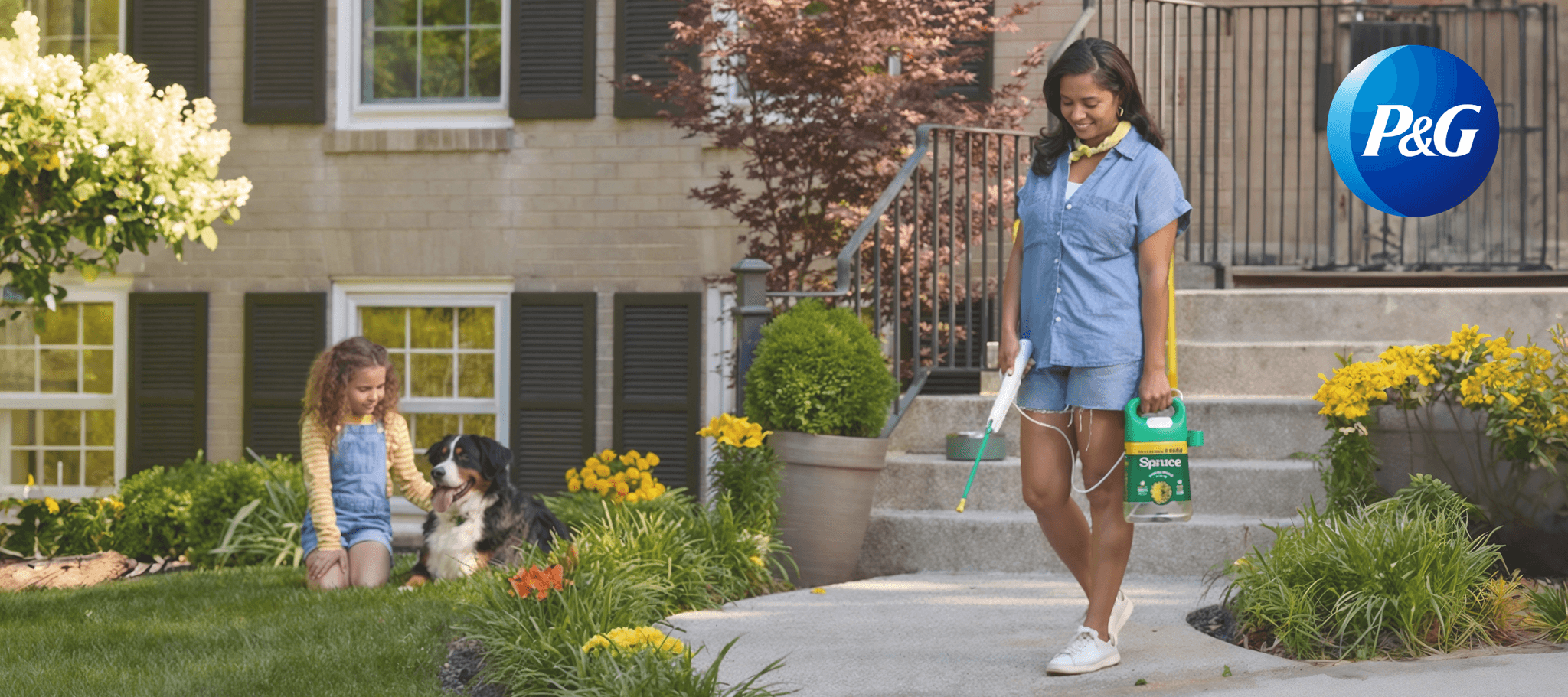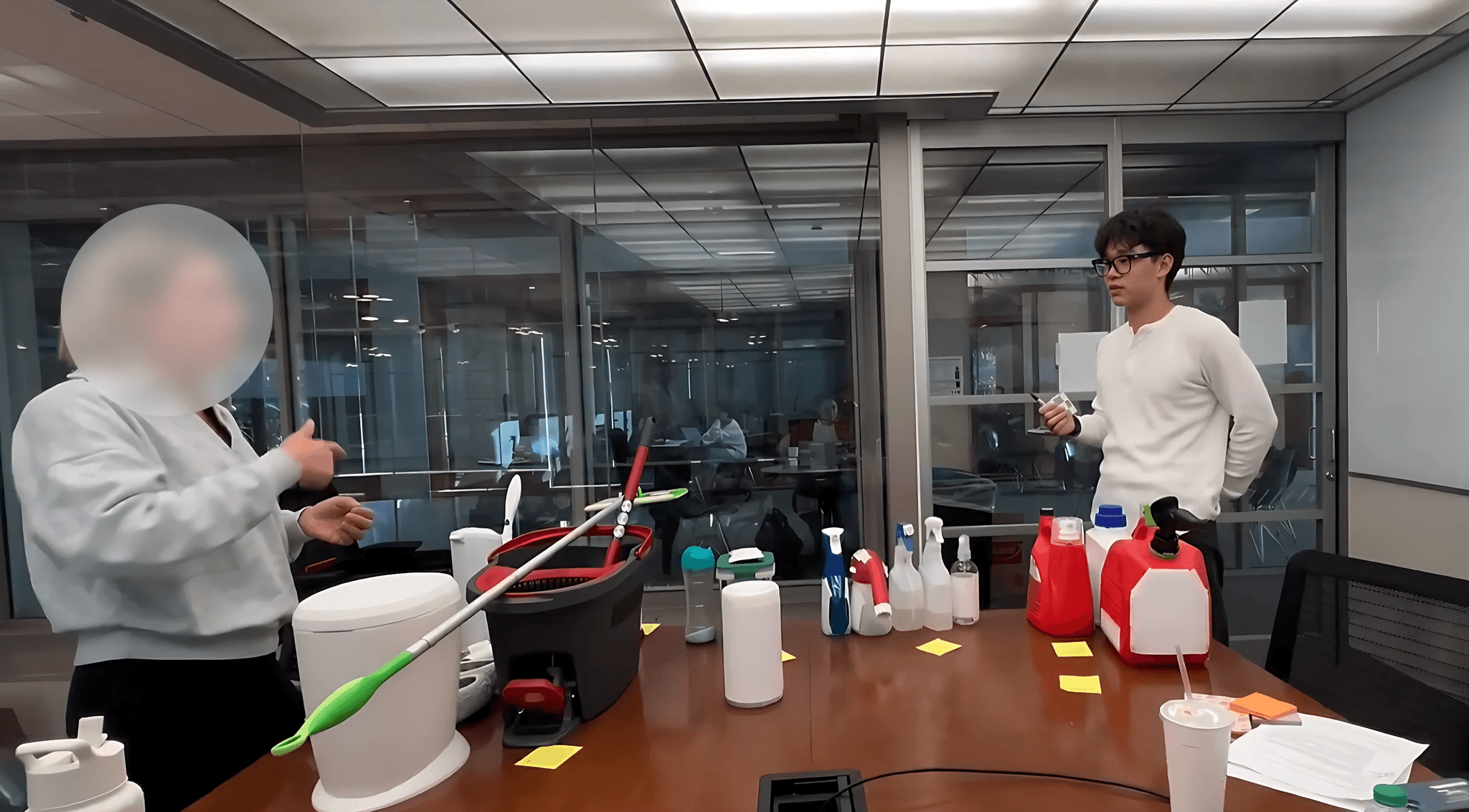Sponsored Project by P&G Spruce
Bringing next-gen ease to weed-free lawn care

Starting my master’s journey at Northwestern, I took part in a 10-week, human-centered design studio course sponsored by Procter & Gamble. Request by its venture team, I collaborated with four other designers to develop a next-generation product concept for Spruce, a new P&G brand aimed at outdoor care.
Duration
10 Weeks
Skills
Design Research
Roadmapping
Physical Prototyping
01
The Vision
Research shows that while 97% of consumers believe it's important to maintain the appearance of their yard, 55% are dissatisfied with their current weed control solutions. Recently launched by Procter & Gamble, Spruce offers products containing non-selective contact herbicides.
Our team has been tasked with designing the future of lawn care. Our vision is a truly hands-off solution that helps users maintain a weed-free lawn year-round with minimal effort.
02
Understand
The biggest challenge in starting this project was that lawn maintenance, especially weed control, felt distant from us as students. To bridge this gap, we divided the desktop research tasks, working together to understand the current market landscape and existing products. With this foundational knowledge, we conducted 8 in-home visits over two weeks, observing users’ lawn care practices, methods, and their pain points.

* Synthesis board after the in-home visits
03
Define
After defining our personas, creating how might we statements to tackle complex lawn care problems from different angles, we created some initial concept.
To validate and iterate on these ideas, we conducted 2 rounds of Central Site Visits using stimuli to validate our ideas and better understand users' priorities for a truly hands-off product.

* In this picture, I am guiding a user through a ranking exercise with cleaning products currently on the market. This activity helped us understand how users perceive the design, functionality, power, precision, and safety of these products.
04
Final Prototype
Research insights & final prototype are under NDA, please reach out for more details!
05
My Learning
Balancing Structure and Flexibility in Interviews
Relying on rigid interview guides gathered data but left little room for deeper insights. Shifting to a flexible approach—allowing space for follow-ups—made sessions more natural and led to richer discoveries.
Redefining Value Through Cross-Industry Insights
A project deadlock wasn’t due to cost or complexity but a value mismatch. Looking beyond our field, we drew inspiration from home appliances integrating with smart systems, streamlining features to enhance both function and perceived value.
Appreciate the Scroll